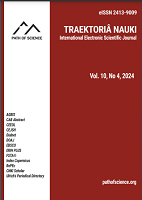Production and Optimization of Standard Emulsion Paint Using Titanium Dioxide and Kaolin as Prime Pigment via Response Surface Methodology
Production and Optimization of Standard Emulsion Paint Using Titanium Dioxide and Kaolin as Prime Pigment via Response Surface Methodology
Author(s): Surajudeen Abdulsalam, Mohammed Jibril, Atiku Yakubu MusaSubject(s): Energy and Environmental Studies, Methodology and research technology
Published by: Altezoro, s. r. o. & Dialog
Keywords: Cost of Production; Exchange Rate; Local Materials; Low Cost; Pigment Binder Ratio; Quality of Paints;
Summary/Abstract: The rising exchange rate between the naira and the US dollar has recently increased importation costs, making raw materials for emulsion paint production, like most commodities, more expensive. From those above, it becomes imperative to look inward for substitutes or supplements for some of these costly raw materials to bring down the cost of production without compromising the quality of products. In emulsion paints, the prime pigment is the second most expensive component. For instance, prime pigment (titanium dioxide) costs about 110 times higher than its local equivalent (kaolin). To reduce the production cost of emulsion paints, a study of the production and optimization of emulsion paints using mixtures of titanium dioxide (TiO2) and kaolin as the primary pigment and polyvinyl acetate (PVA) as a binder was carried out using the Central Composite Design (CCD) software using the Surface Response Methodology (RSM) method. The paints were produced in a benchtop multifunctional batch mixer and analyzed using standard procedures. Results revealed that the best process variables using the CCD were TiO2 (0.5 kg), kaolin (0.1 kg), and PVA (1.4 l), in addition to other paint ingredients, which are kept constant. The best paint sample (Run 5) produced had the following characteristics: viscosity (943 cP), pigment-to-binder ratio, PBR (3.65), and cost of production (₦ 10,108.00 per 20 l). On optimization, the optimum process variables were TiO2 (0.5 kg), kaolin (0.1 kg), and PVA (1.28 l), in addition to other paint ingredients, which are kept constant. The Optimised/Validated paint produced had the following characteristics: viscosity (978 cP), pigment-to-binder ratio, PBR (3.98), and cost of production (₦ 9,616.00 per 20 l). Therefore, there was a 19.53 % reduction in the cost of production without compromising the quality of the paint produced. Instead, the hybridized pigment sample attained a slight increase in viscosity of 3.58 %, which still met the standard specification set by the Nigerian Industrial Standard (NIS).
Journal: Traektoriâ Nauki
- Issue Year: 10/2024
- Issue No: 6
- Page Range: 2010-2021
- Page Count: 12
- Language: English

